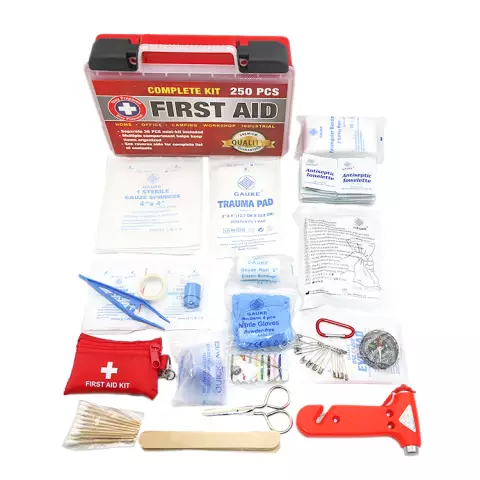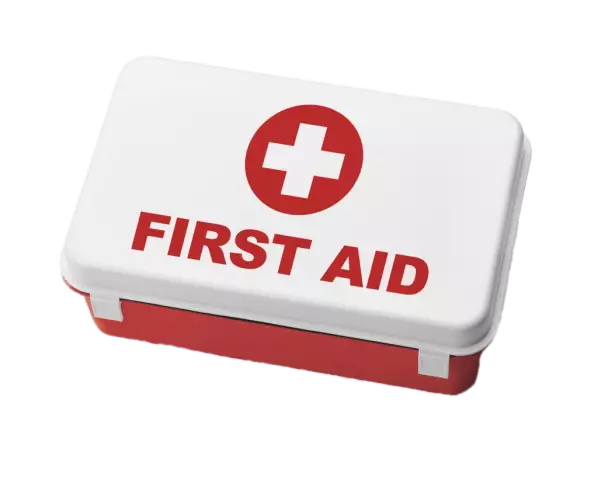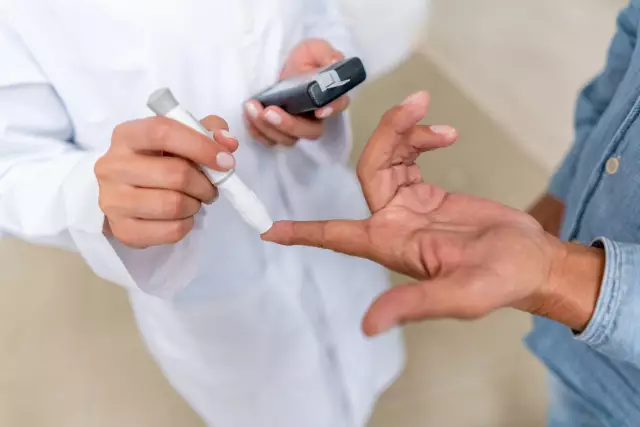- Author Rachel Wainwright [email protected].
- Public 2023-12-15 07:39.
- Last modified 2025-11-02 20:14.
What should be in a home first aid kit

A home first aid kit is a set of medical devices and medications that in one form or another is recommended to be kept at home in case of sudden health problems.
A standard or personalized home first aid kit - which is more practical?
Nowadays, you can buy ready-made kits of home first aid kits in pharmacies, which contain medicines and devices necessary in emergency situations. But all families have a composition of different ages - from young children to elderly parents, which is not taken into account in the standard composition of a home first aid kit (it is intended only for adults).
In addition, the chronic pathology of a family member may require emergency supplies that are not available in conventional standard kits (for example, diabetes mellitus, depending on the situation, may require insulin or glucagon).
Therefore, it would be more correct to approach the formation of a first-aid kit individually, taking into account the age and nature of the most common diseases.
All components of a home first aid kit can be roughly divided into several groups:
- Medicines for external use;
- Oral medications;
- Bandaging products;
- Aids.
If you think over the composition of a home first-aid kit in advance and stock up on the necessary drugs according to the list, then there is a high probability that at the time of emergency the necessary funds will be at hand.
It is also better to keep the list of constantly replenished medicines in your home medicine cabinet so that you know which of the medicines you need to buy at the right time.
External means
Topical preparations help in the treatment of diseases and injuries of the skin, mucous membranes and eyes.
Among the bactericidal preparations, it should be noted that alcoholic solutions of brilliant green and iodine are irreplaceable. These are universal antiseptics for treating the edges of wounds, abrasions, cuts and scrapes. They destroy all pathogenic bacteria at the site of application, and almost no immunity develops to them. Brilliant green and iodine are usually available in dark glass bottles, but convenient markers are available. They do not get your hands dirty, and are very convenient for small children and on the road. These products do not deteriorate for a long time, so they can be kept in stock for several pieces.
From other antiseptic agents for a home first-aid kit, you should pay attention to miramistin, alcohol, salicylic alcohol and calendula tincture. It is also good to have levomekol or some other antibiotic ointment at home.
It is important to have hydrogen peroxide in your first aid kit. It is useful as a hemostatic agent, it is good for cleaning heavily contaminated wounds, as well as for blotting dressings and adhesive plaster that have dried to the wound.
Dexapantelone-based drugs - Bepanten, Panthenol, and Rescuer ointment can help from household burns. Swelling of the legs, as well as hematomas, dissolve well under the influence of heparin-based ointments and gels. The home medicine cabinet can be refilled with Troxevasin, Lioton Gel or Heparin Ointment.
Local warming anti-inflammatory ointments based on NSAIDs relieve pain from bruises, stretch marks and osteochondrosis in the spine. Most often they contain ketoprofen, ibuprofen or diclofenac as the main active ingredient.
Albucid or chloramphenicol eye drops are what should be in your home medicine cabinet in case of conjunctivitis or eye injury.
Medicines for oral administration as part of a home first aid kit
Antipyretics are an important component of a home medicine cabinet. They are also capable of providing analgesic and anti-inflammatory effects. It is desirable that their supply is sufficient for an adult for 2-3 days. The increased temperature proceeds with rather unpleasant subjective sensations of heat or chills, is often accompanied by pain in the bones and muscles, in the eyes, so it is difficult to do without antipyretic drugs.
The most common antipyretic drugs are created on the basis of two active substances - paracetamol (Efferalgan, Panadol, Calpol, etc.) and ibuprofen (Ibufen, Nurofen, etc.).
For the treatment of ARVI, many combined agents are produced to lower the temperature, in addition to the antipyretic component, they include antihistamines, vitamins and vasodilators (Fervex, Teraflu, Rinza, etc.), they are allowed to be taken only in adulthood. For children under one year old, it is convenient to have rectal suppositories and liquid syrups with an antipyretic effect as part of a home medicine cabinet.
Paracetamol and ibuprofen can help manage both headaches and muscle pain.
Antispasmodics relax tense smooth muscles of internal organs and blood vessels, which also relieves pain in urolithiasis or gallstone disease. It is advisable to have No-shpa or Drotaverin in your home medicine cabinet.
With excitement and heart palpitations, Corvalol helps, a bottle of which in any home medicine cabinet will not be superfluous. In addition to it, you can purchase Validol in capsules or tablets - it helps to cope with the signs of neurosis, with motion sickness or a slight attack of angina pectoris.
What should be in a home first aid kit for problems with the gastrointestinal tract:
- Sorbents - help with diarrhea and poisoning (Smecta, Activated carbon or Polysorb);
-
Pro- and prebiotics - help to restore normal microflora in the intestine (Bifidumbacterin dry, Florin forte, Hilak forte or Eubikor);

Sorbents are mandatory drugs in the home medicine cabinet - Enzymes - help with overeating, violation of the usual diet (Mezim, Pancreatin or Creon);
- Rehydrating compounds - required to replenish fluid losses from the body in case of profuse vomiting or diarrhea (Glucosolan, Rehydron - at choice);
- Remedies for diarrhea (Imodium or Lopedium).
It is also advisable to include antihistamines in the list of mandatory for a home first aid kit (Ketotifen, Loratadin, Fenistil, Kestin or Suprastin), they help fight allergic manifestations of diseases.
Of the drugs in the home first-aid kit, it is imperative to include those that are necessary in the presence of a chronic illness of one of the family members (for example, with arterial hypertension, gastritis, diabetes mellitus, etc.).
Dressing
It is indispensable for wounds, abrasions, burns and cuts. Be sure to put bandages (sterile, non-sterile), cotton wool and cotton swabs, adhesive plaster, elastic bandage (in case of sprains) in the home medicine cabinet.
Auxiliary items in the home medicine cabinet
- Sterile syringes and spare needles for them;
- Thermometer;
- Syringes of different sizes;
- Warmer;
- Scissors;
- Pipettes.
With such a supply of medicines in the home first-aid kit, you can not worry about the health of your loved ones and your own - the first necessary aid can be provided right at home.
Found a mistake in the text? Select it and press Ctrl + Enter.






